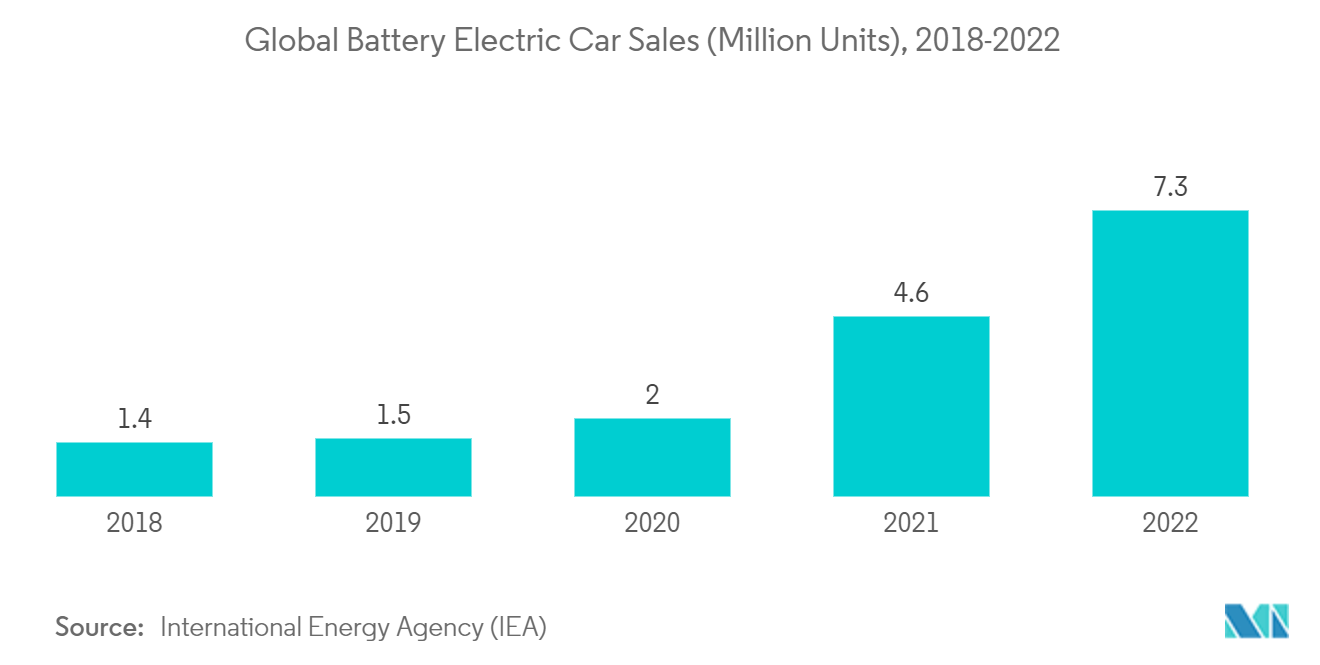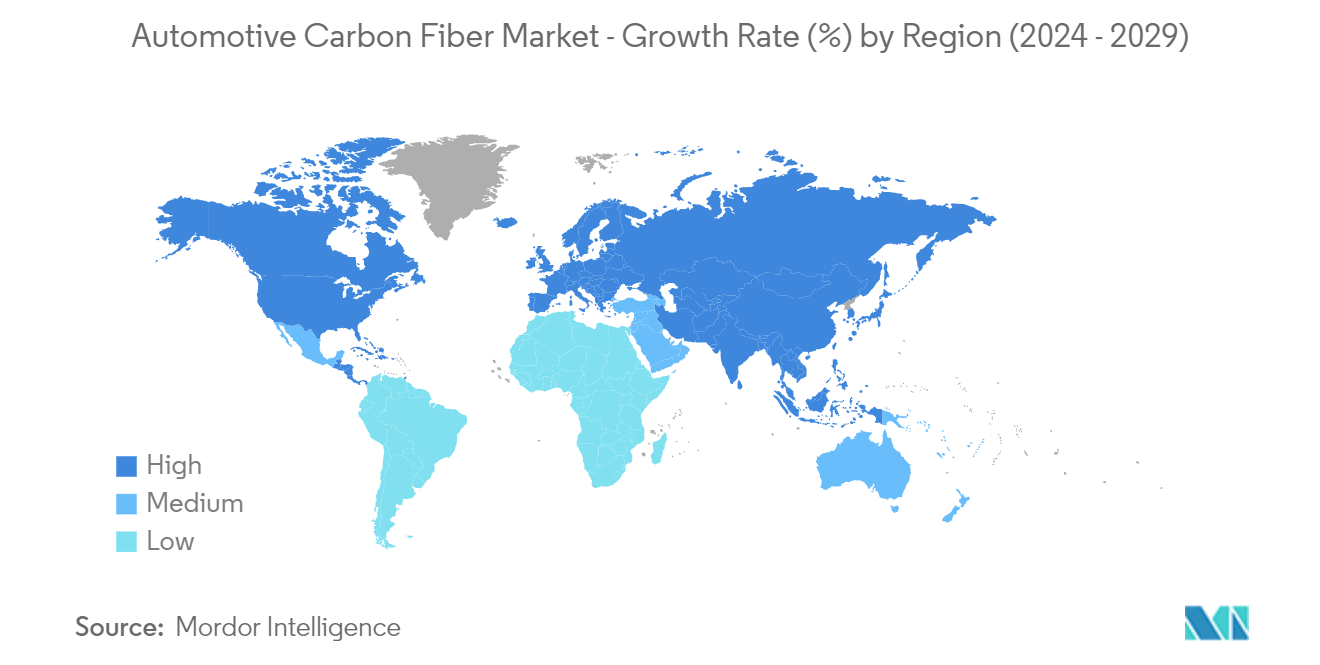Market Trends of Automotive Carbon Fiber Composites Industry
Passenger Car Segment Holds a Major Market Share
The rise in passenger vehicle sales worldwide has been in line with an increase in consumers' disposable incomes and buying capacities. An increase in vehicle electrification is likely to enhance the demand for lightweight vehicles, which is likely to result in major growth for the market during the forecast period.
The rise in demand for electric vehicles owing to the enactment of stringent emission norms globally is likely to increase the integration of lightweight parts that are fabricated from composite materials.
Due to the growing concerns over environmental issues caused by the rise in exhaust emissions, there has been an increasing demand for high-performance electric vehicles. This has been further supported by the introduction of strict regulations regarding emissions and fuel economy, as well as government initiatives such as subsidies and incentives to encourage the adoption of electric vehicles.
Increasing investments and rising government initiatives to promote the adoption of EVs, combined with the growing demand for sustainable transportation solutions and decreasing costs of EVs and their components, are also expected to drive market growth in the coming years.
Advanced materials such as carbon fiber are essential for boosting the fuel economy of modern cars and maintaining performance and safety. Since it takes less energy to accelerate a lighter object than a heavier one, lightweight materials offer great potential for optimizing vehicle efficiency and fuel economy. A 10% reduction in the vehicle's weight can transpire to a 6-8% increase in fuel economy.
In recent years, automotive parts have witnessed advancements and innovations with the evolution of new technologies. Among them, the use of lightweight materials for the manufacturing of auto components has been gaining attention globally.
In a typical automobile, fiber is 50% by volume while adding just 10% to the weight. The UK government recently declared plans to cut 68% of CO2 emissions by 2030 in a proposal to tackle climate change and announced a ban on gasoline and diesel cars from 2030.
Major players worldwide are investing in the research and development of carbon fiber components to enhance vehicle efficiency. For instance,
- In November 2022, Ahera, an ultra-premium electric automotive brand, revealed the exterior design of the first model of its SUV. The vehicle is made up of highly sustainable composite material, including forged carbon fiber.
- In October 2022, Nissan Motors showcased its Frontier pickup truck powered by a 5.6-liter V-8 engine and integrated with a wide-body kit featuring carbon-fiber front fenders and bedsides, along with a carbon hood.
Considering these aforementioned factors and developments, the demand for highly efficient carbon fiber in passenger cars is anticipated to register high growth during the forecast period.

Europe Dominating the Market
Luxury cars and sports cars are anticipated to hold high potential for the usage of carbon fiber. Europe is projected to be the leading region in terms of strong demand for luxury cars and sports cars.
The European luxury car market is expected to be driven by SUVs over the coming years, while traditional passenger cars lose their market share. It is a global trend that started in the United States and then spread to Europe and Asia. Some of the brands whose bestseller SUVs are sold in Europe include Nissan, Hyundai, Kia, Mazda, Mitsubishi, Jaguar, Lexus, Porsche, Maserati, and Volvo. These vehicle sales are expected to drive the demand for automotive air suspension over the coming years.
The automotive industry in the United Kingdom is now best known for premium and sports car manufacturers, including Aston Martin, Bentley, Daimler, Jaguar, Lagonda, Land Rover, Lotus, McLaren, MG, Mini, Morgan, and Rolls-Royce. The country's passenger car sales amounted to 12.64 units in 2022. This growth has been backed by the launch of these OEMs' latest models, which have embedded the advanced body material.
With the enactment of stringent emission norms and fuel economy standards in European countries, automobile manufacturers in Germany, Italy, and France, such as BMW, Volkswagen, and Audi, have started using carbon fiber composites in manufacturing vehicles.
Companies are trying to invent new parts made of carbon fiber that can reduce a vehicle's total weight to a great extent. The application of carbon-fiber-reinforced plastic (CFRP) has been widely adopted for the production of automotive bodies, particularly by hyper-car manufacturers such as Ferrari, Lamborghini, and Porsche.
In line with the abovementioned factors, the demand for carbon fiber for automotive parts is anticipated to register a high growth rate in Europe due to luxury and sports car sales.

